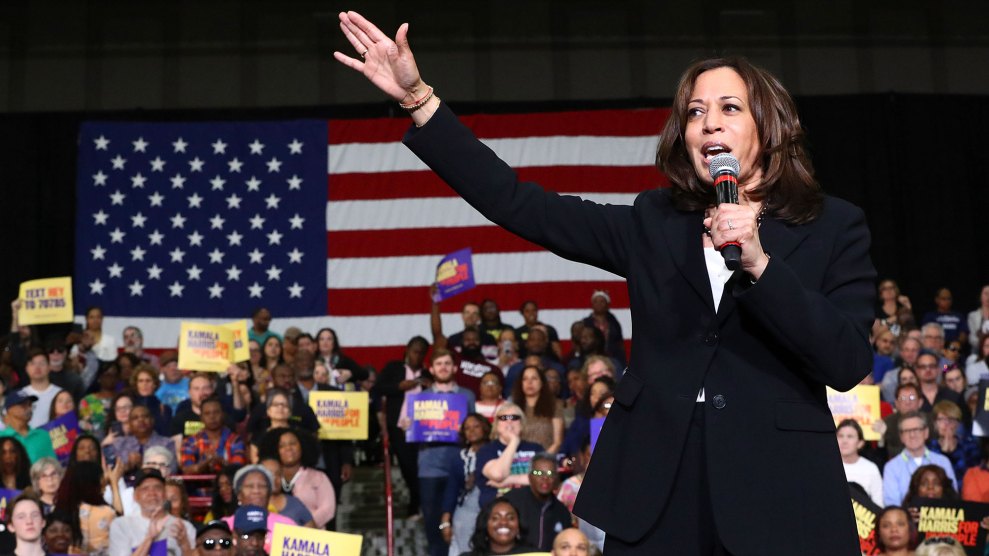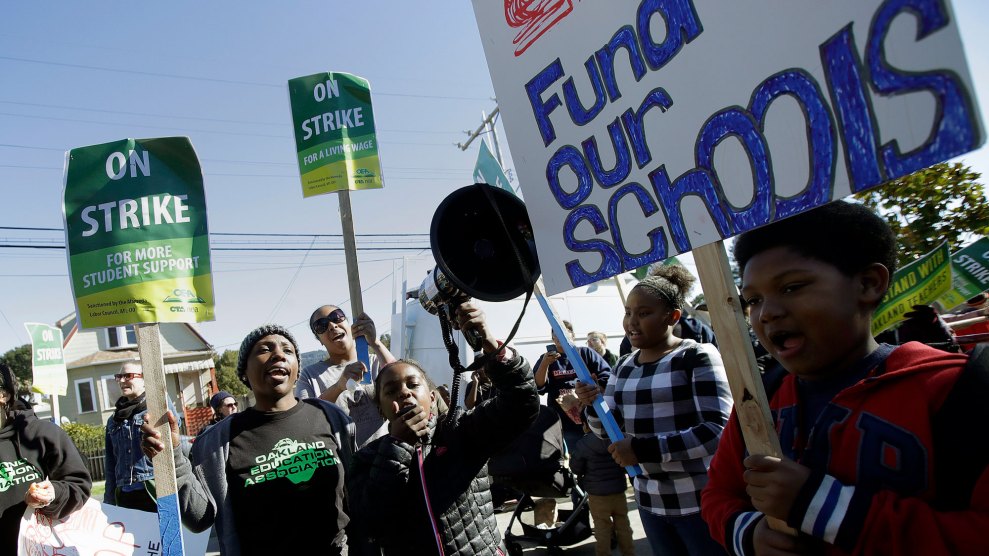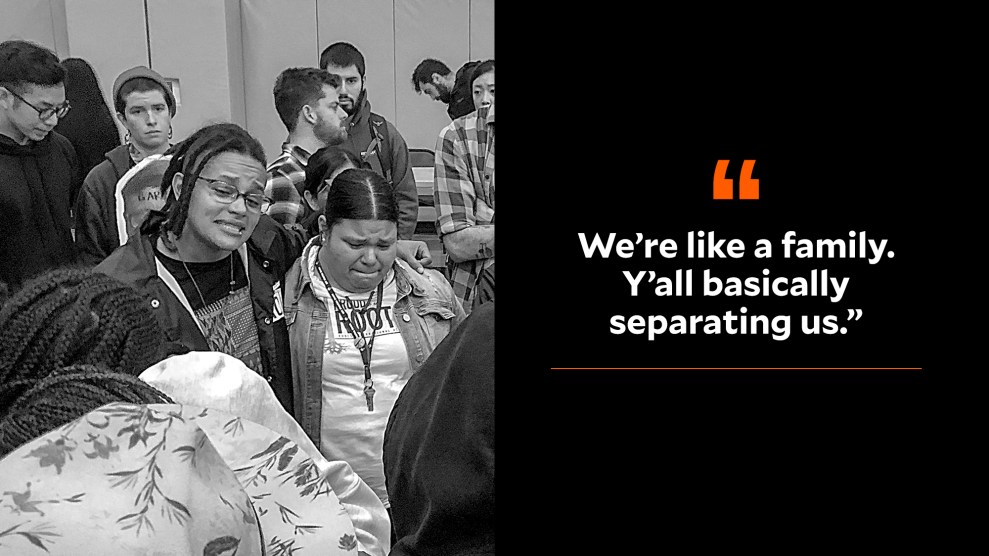
Curtis Compton/Atlanta Journal-Constitution/AP
California Sen. Kamala Harris wants to see teachers across the country get a massive pay bump, and she’d have the federal government take on an unprecedentedly large role in making that happen. Earlier this week, Harris, who is running for the 2020 Democratic nomination, proposed an ambitious plan that would target the growing pay gap between teachers and other professions, aiming to give educators a $13,500 pay increase on average.
In an op-ed in the Washington Post introducing the plan, Harris focused on recent teachers strikes in West Virginia, Oklahoma, and California, noting that the demonstrations “reflect our national failure to value educators and pay them what they deserve.” Harris’ proposal represents one of the most ambitious plans toward investment in education by a presidential candidate. In a statement, Randi Weingarten, president of the American Federation of Teachers, one of the nation’s largest teachers unions, praised the plan as “one of the most thoughtful initiatives we’ve seen in years” and encouraged other 2020 candidates to follow Harris’ lead in offer solutions.
Though specific in its intent, it’s hard to know how, exactly, the sweeping investment would play out on the ground.
A recent study from the left-leaning Economic Policy Institute found an 11 percent pay gap between teachers and their fellow college graduates. Under Harris’ plan, the goal is to completely erase that difference by the end of her first term in office if she wins the 2020 election. The federal government would invest $315 billion over the course of a decade in an effort to raise the average salary by 23 percent. The feds would contribute part of the initial investment and then, through matching funds, incentivize states to close the rest of the gap: For every $1 a state spends on boosting teacher salaries, the feds would chip in $3 until the pay gap in that state is closed. Though the average teacher currently makes $60,483, the average pay varies widely from state to state, as does the wage gap.
Dan Goldhaber, a professor at the University of Washington and director of its Center for Education Data & Research, applauded Harris’ proposal but questions whether a 23 percent pay increase across the board could realistically happen. Harris’ proposal, he noted, also represents a more “micromanagement role from the federal side” than usual. In 2016, the federal government spent about 8 percent of total K-12 funding, or $56 billion, covering Title I, special education spending, and other grants to states and school districts. Back in 2009, in response to the recession, Congress passed the American Recovery and Reinvestment Act and injected $100 billion to help state budget shortfalls and prevent teacher layoffs. While the stimulus attempted to blunt the effects of the recession, Harris’ $315 billion plan would offer a targeted federal investment toward an issue typically handled at the state and local level, which bear the bulk of education spending in the country.
Goldhaber notes that the plan could benefit from specifically targeting more money toward attracting and retaining early career teachers and less for late career teachers, as well as incentivizing for educators to work in STEM, special education, and other areas that are more difficult to attract teachers and where the need is high. “There’s evidence that the churn of teachers in a school…is detrimental to student achievement,” Goldhaber says. “Teachers, like employees in the economy as a whole, do respond to financial incentives. So retention is higher when salaries are relatively higher.”
The proposal goes beyond boosting wages for public school teachers and includes a “multi-billion dollar investment” toward teacher development programs. Half of the money would go toward programs at HBCUs and other institutions in an effort to address the underrepresentation of teachers of color in the profession, many of whom come from minority-serving institutions, at a time when black teachers are increasingly leaving the profession while the share of educators of color has gone up. Harris’ plan would also provide extra funds for teachers who teach in the “highest-need” schools to “reduce teacher turnover, attract talented young graduates and experienced educators, and improve teaching and learning conditions for our kids.”
To pay for the plan, Harris would increase “the estate tax for the top 1 percent of taxpayers” and close loopholes “that let the very wealthiest, with estates worth multiple millions or billions of dollars, avoid paying their fair share.”
Other Democratic presidential candidates have pitched paring back President Donald Trump’s tax cuts and have called for a tax on wealthy Americans to pay for certain proposals. Massachusetts Sen. Elizabeth Warren, for instance, proposed a wealth tax that would, among other things, go toward eliminating student loan debt.
Harris’ plan makes a case that the revenue from taxing the country’s wealthiest could go toward bolstering the pay for teachers, speaking to a well-organized slice of the electorate that has fallen behind in recent years. Sylvia Allegretto, an economist at the University of California at Berkeley who has studied the teacher pay gap, noted that the recent strikes “brought much-needed attention to the defunding of public schools” in the last decade.
Though it’s hard to know now what Harris’ proposal would look like in practice, Allegretto says the push to broaden the estate tax and close corporate loopholes represents a different approach to solving the problem from the federal level, which doesn’t typically play as much of a role.
“We have a very high turnover of young teachers. We have teachers that leave the profession, and we have students that won’t come into the profession,” she says. “I think [Harris] is trying to bring full circle some type of policy that will actually have some bite to address” the issue of teacher pay.













